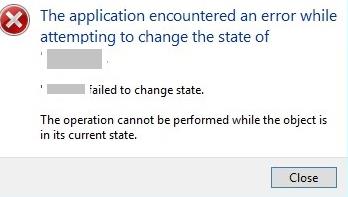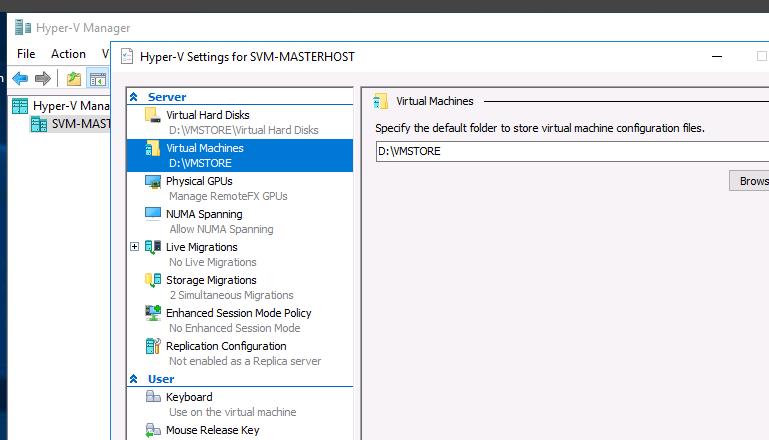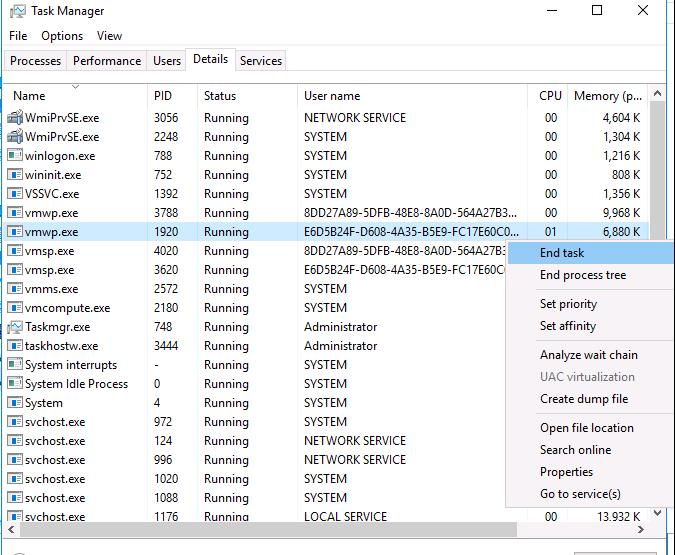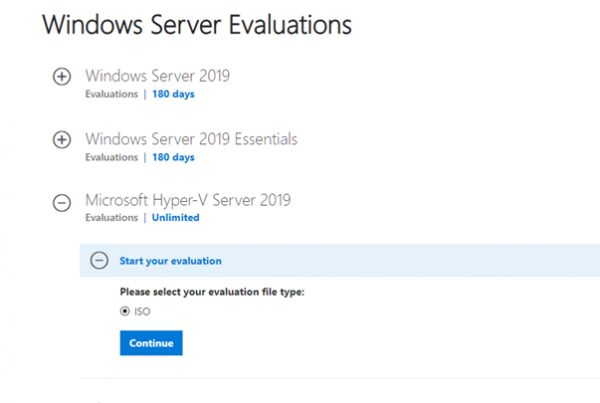If your virtual machine running on Hyper-V is stuck for some reason, stopped responding and doesn’t start/stop/reset after clicking the corresponding buttons in the Hyper-V console, the only way out to fix this is to forcibly kill the process responsible for this VM on the host OS. I’ll show you how to force restart stuck Hyper-V VMs running on Windows Server 2016/2019 without rebooting the entire host and all running VMs (if you do not have a Hyper-V HA cluster and Live-Migration).
Hyper-V VM Stuck in the “Stopping/Starting” State
Suppose, that one of your Hyper-V VMs is stuck in the Stopping (Stopping-Critical) or Starting (Starting x%) state.

The guest OS doesn’t respond and “Turn Off”, “Shut Down” and “Reset” buttons in the Hyper-V Manager either are unavailable, or return the following error when pressed:The application encountered an error while attempting to change the state of VM.
Failed to change state.
The operation cannot be performed while the object is in its current state.

Hyper-V Manager Stuck on “Connecting to Virtual Machine Management Service”
If your Hyper-V does not show virtual machines in the Hyper-V Manager console, and returns the “Connecting to Virtual Machine Management service” error, you need to restart the vmms.exe (Hyper-V Virtual Machine Management service) process. This is a safe operation and will not interrupt the running VMs. The easiest way to restart the vmms.exe process is through the vmms service using the services.msc console or with the PowerShell service management cmdlets:
Get-Service vmms | Restart-Service

How to Kill a Hung VM Process in Task Manager?
The only way to force shutdown restart such a stuck VM without rebooting the whole Hyper-V host is to end its running workflow in the guest OS. All VMs on the Hyper-V host are started using the vmwp.exe process (Virtual Machine Worker Process). To search for a process, you need to find out the GUID of the virtual machine.
You can get the VM GUID through the Hyper-V Manager console. Open the Hyper-V server settings. In the Server section, the location of the VM configuration files is shown (in our case it is D:VMStore).

Open this directory in File Explorer and find the folder with the same name as your virtual machine has. Copy the GUID that is specified in the name of the VM configuration file with the *.vmcx extension.

Run the Task Manager and go to the Details tab. All virtual machines are running in their own instance of vmwp.exe. To determine which process is responsible for your VM, you need the GUID of the hung-up VM you obtained earlier. Locate the process vmwp.exe that has the GUID of your VM in the User name column. Kill this process (End Task).

The virtual machine will be forced to stop. Now you can do anything with it.
Killing a Frozen Hyper-VM using PowerShell
It is much easier to find and kill the process of the hung-up virtual machine using the PowerShell CLI. Run the PowerShell console with administrator privileges (your account must be added to the local “Hyper-V administrators” group).In this case, the built-in Stop-VM cmdlet will not let you shutdown the VM. If you try to run the Stop-VM -Force command, it also freezes. Obviously awaiting a response from the VM.
You also need to kill the VM process by its GUID. You can get the VM GUID by its name. For example, to get the GUID of the VM with the name SVM-GUARDEDHOST1, run the command:
$VMGUID = (Get-VM "SVM-GUARDEDHOST1").ID
If you don’t want to type the full name of the VM, you can list all the VMs registered on this Hyper-V host:
Get-VM | Select Name, Id

Copy your VM GUID from the resulting list.
Find the vmwp.exe process identifier (PID) for this VMGUID:
$VMWMProc = (Get-WmiObject Win32_Process | ? {$_.Name -match 'VMWP' -and $_.CommandLine -match $VMGUID})
Then, using the Stop-Process command, you must force-terminate this process:
Stop-Process ($VMWMProc.ProcessId) –Force
This is the easy way to forcefully terminate the working process of a hung-up Hyper-V virtual machine.
Tip. We also have a description of the similar way to kill the process of the hung-up VM on VMWare ESXi.
Hyper-V: Failed to Change VM State
Sometimes it happens that even after killing a hung-up VM process, you cannot turn on the VM. Moreover, it freezes in the Starting state with an error:
Virtual Machine Connection Failed to Change State.
In this case, check the following options:
- Check that there is sufficient free space on the disk on which the Hyper-V VM files are stored;
- If an ISO image is connected in the VM settings, check its availability;
- Check the network adapter settings of the VM. Virtual network adapters must be connected to an existing Hyper-V virtual switch (there must be no status Network Adapter – Configuration Error for any NIC);
- Check that the Hyper-V Virtual Management Service (VMMS) is running and didn’t stuck in the Stopping state;
- Make sure that your antivirus software doesn’t block access to VM files. Add paths to the VM directory to the antivirus exclusions;
- Check for Hyper-V related errors in the Event Viewer -> Applications and Services Logs -> Microsoft -> Windows -> Hyper-V-Worker.



